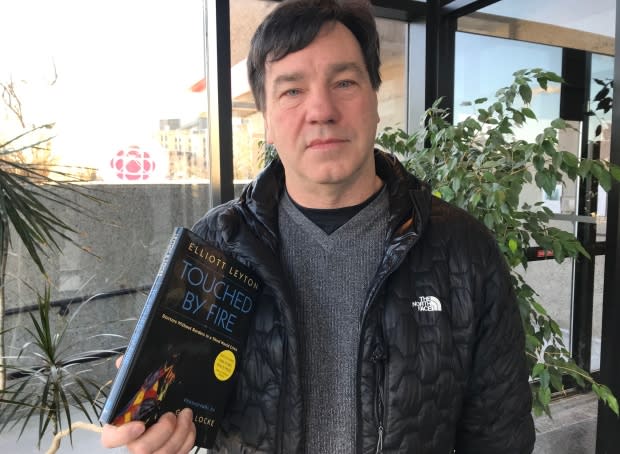N.L. photojournalist looks back on Rwandan genocide 25 years later
It's been 25 years since the Rwandan genocide, but award-winning photojournalist Greg Locke's grim memories are as clear as if it happened yesterday.
"We ended up coming in there right in the aftermath of this. I think the first thing for me was driving down the road and seeing walls and walls of refugees," Locke told CBC Radio's St. John's Morning Show.
"These things force mass migrations of refugees across borders, and so we came to a standstill on a road as we faced nearly 800,000 people just pouring out of a refugee camp."
Locke had made the trip to Rwanda just after the three months of mass killings, during which an estimated 800,000 people died between April and June 1994. Most of the people killed were Tutsi, one of the country's largest population groups.
He was there on business for Touched by Fire, a book he was working on with Elliott and Bonnie Leyton about the men and women of Médecins Sans Frontières (Doctors Without Borders), an organization that provides aid to countries amid mass crisis like war and disease.
Getting the full story
While in Rwanda, most of his information about the killings and unrest came from listening to and reading the news, just as for anybody else, Locke said. There were some times when he received information from locals, he said, but he hadn't realized the full scope of the events until visiting a church in Ntarama.
"Basically they took 5,000 people into this church, and over a 24-hour period killed them all," he said.
"All the bodies were still in that church when we got there, even a year later. They were just starting to clean that out, and I think that's the one place where it sunk in to the magnitude of what had really happened here."
Just a year before shooting frames from inside of that church, Locke was covering the war in Bosnia.
He was a seasoned professional by then, and felt able to capture chaos and then let it go and move on to the next assignment. The camera can act as a shield, he said. But sometimes, years later, it catches up to you.
"It's just the nature of the business. You do your job and you move on to the next," he said.
"One of the things is, I have a very low tolerance for people complaining about stuff … and I'm really hypersensitive to the hate speech that's going on these days."
Capturing reality
North Americans can live in a bubble, Locke said, one that makes it able for them to ignore what happens in other parts of the world.
"Even when we started doing this book there was people saying, 'Why are you doing that? Nobody cares about what goes on in Africa,'" he said.
"Whereas Europeans, I guess they have a much a much closer connection to things like Africa and Asia and a greater scope of media."

Even with the naysayers, Locke said he continued his work for those who wanted to see it, knowing it was an important assignment.
When published, Touched by Fire was picked up as a textbook for a course at the University of North Carolina, he added.
One of Locke's images was also selected by Maclean's magazine as photo of the year.
"When you're working you just shoot it and move on. You don't think about it," Locke said.
"I guess, maybe it did go to some good."
Read more from CBC Newfoundland and Labrador

